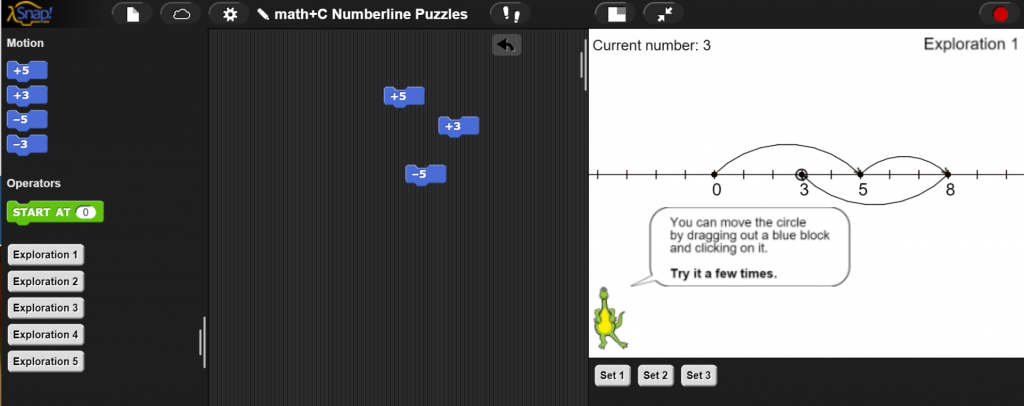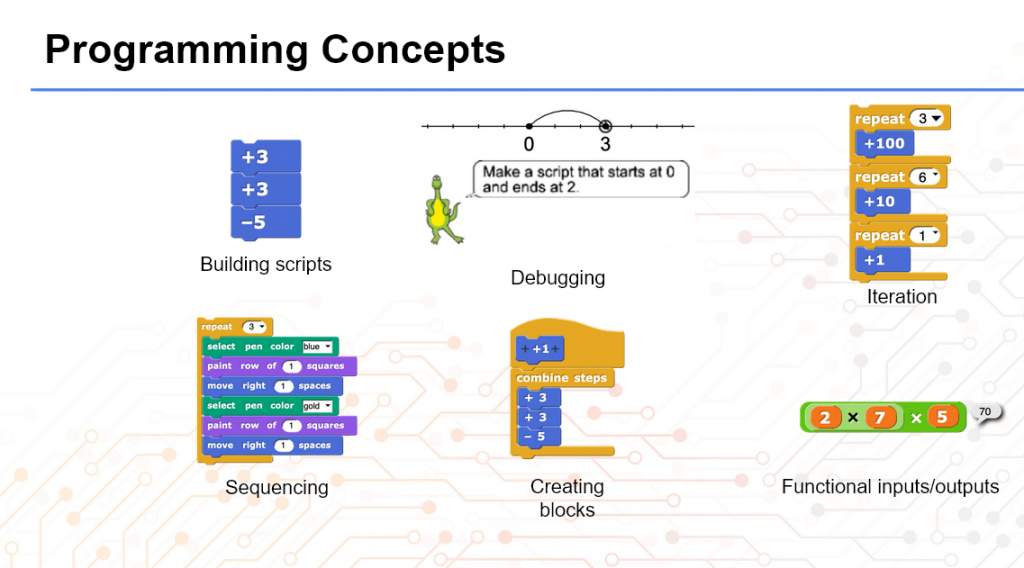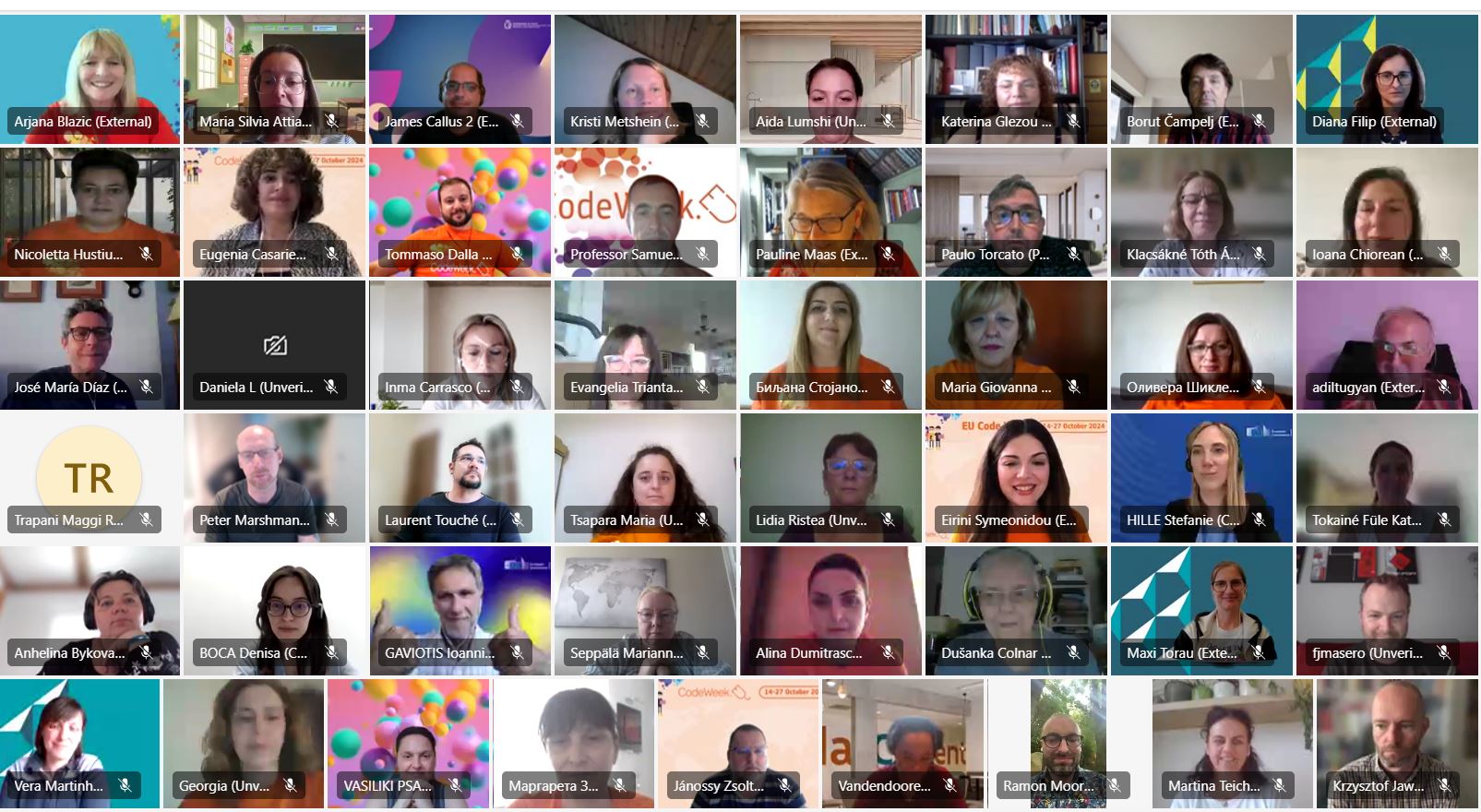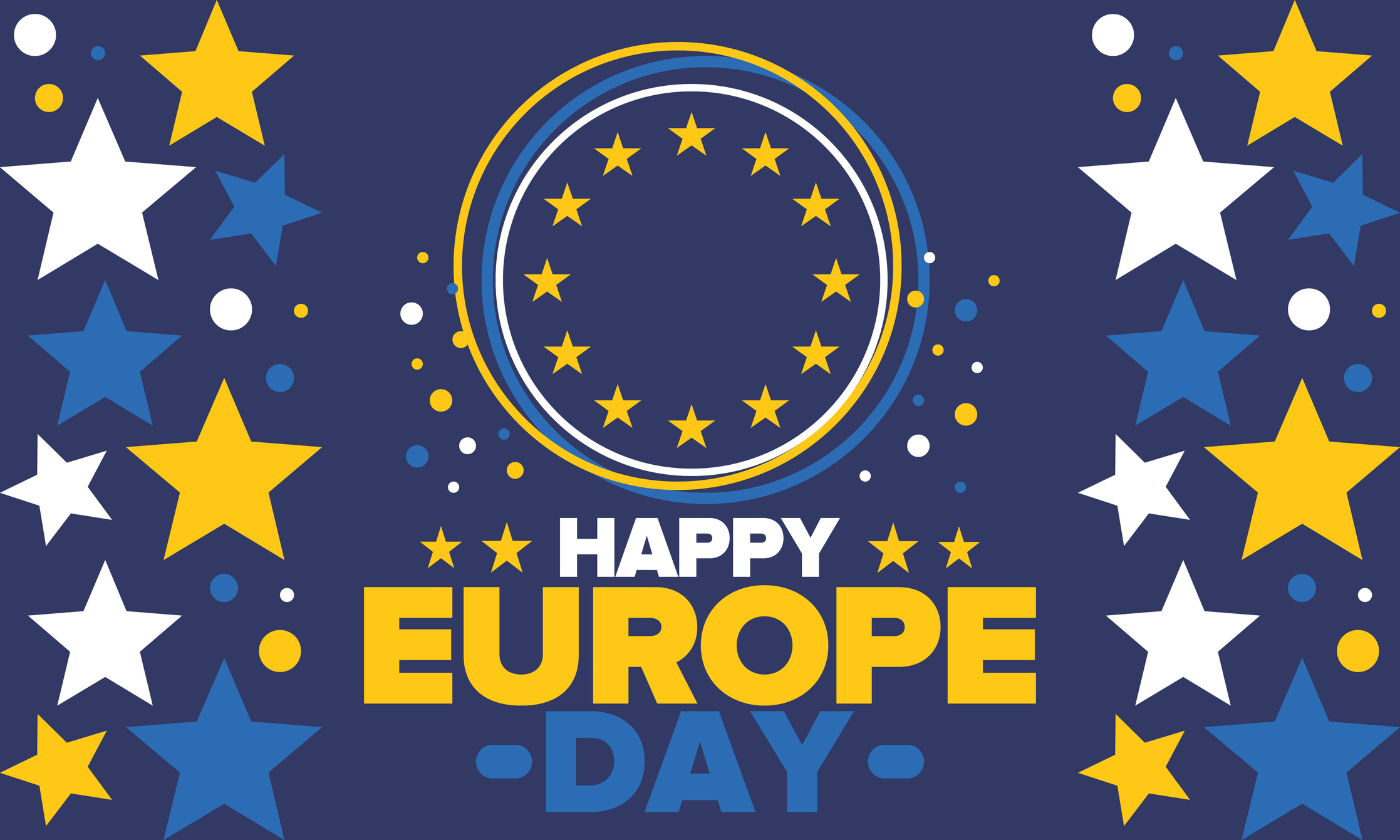‘The slightly different math lesson’: Math problems and coding concepts for beginners
Publication date: October 26, 2022
By Margot Schubert, coding teacher in Munich, Code Week Leading Teacher in Germany
Since we first participated with our primary school in Code Week in 2019, the coding workshops in October have become one of the highlights of the school year for all our children.
Last year, for the first time, I did a coding workshop called ‘The slightly different math lesson’ with a Grade 1 class, with kids aged five to six. It was their first encounter with coding and it was a big success. In this workshop we solved math problems by using code blocks – i.e. writing code to solve the math problems. The basic idea was to use an easy and familiar math concept in a playful manner as a stepping stone into the world of coding.
For the workshop, the class was divided into two groups of 10 kids each and we did a class of 90 minutes with each group. The children could choose whether they wanted to use a tablet or a laptop during the workshop. Three volunteer parents helped out, and this was extremely valuable.

We did exercises to practice math concepts along a Number Line. The application we used for this is called Snap! microworld. Snap! has the same roots as Scratch but it can be customised to suit your own applications. The Number Line contains various tasks that focus on adding and subtracting numbers along a number line. It has a very minimalistic interface and the children go through various ‘explorations’ where a dinosaur gives them instructions and they learn how to use the programme. When they have worked through this first set of exercises they can continue with puzzles and challenges.
Since there are only a few blocks available for programming, it was very easy to introduce how it works to the kids. They almost immediately got familiar with it and found out how to click on the blocks and snap them together into a programme. The adults helped the kids to read the tasks and also with handling the tablets/computers, which for some of the kids was quite a challenge in the beginning.
Learning goals
The nice thing about the Number Line is that it is different from standard learning apps. Unlike those apps where a child can only advance when a task is completed without errors, here the children are encouraged to find the solution by themselves. They can change what they did immediately when they see that the result is wrong. And they can see, through the various puzzles and challenges, that there is often more than one possible solution.
During the workshop it was very nice to see that the learning experience was very different for the different children in class. Some worked through the exercises in the given order and were very focussed on completing all the tasks. Others, on the contrary, were initially just enjoying the experience of seeing the numbers hop from one position to another on the number line. Some kids liked to make very long programmes and see how high they could make the numbers go. In the end, the children in all the groups were very proud of themselves when they had found the correct solution to the math problems – no matter whether they had used a more methodical approach or a trial and error approach.
All the kids enjoyed their first coding encounter very much and they were very proud of their newly acquired coding skills. When the workshop was over some of the kids wanted to continue with coding instead of having a break!

The purpose of Code Week is to inspire young children and motivate them to learn coding. I am certain that this is only possible when the kids associate it with a fun and inspiring experience which they definitely had in the workshop. This workshop demonstrated what one of the creators of the math microworlds said: “With appropriate activities and teaching, programming can help children learn and enjoy mathematics.”
By now the microworlds have become part of my curriculum in my coding classes. They teach various coding concepts in succession, in a very easy to understand format for beginner coders. There are other math microworlds that I can recommend, e.g. about fractions, multiplication, angles and shapes. There is also a recording of a session at the last Snap!Con about the math microworlds on Youtube. Currently the microworlds are available in English, Spanish and German. If you want to contribute to translating the math microworlds in your language we will be happy to guide you through it.

